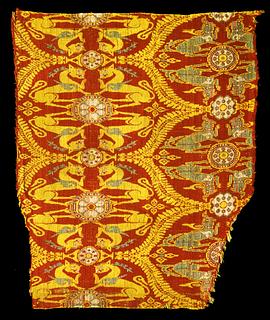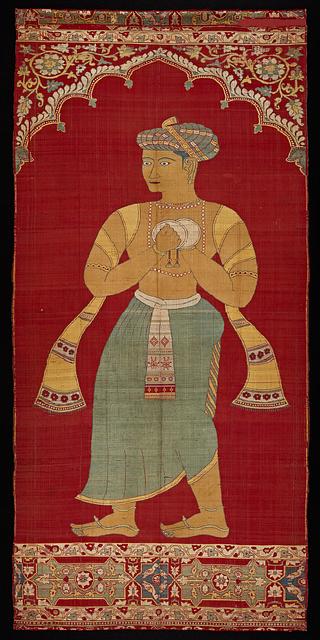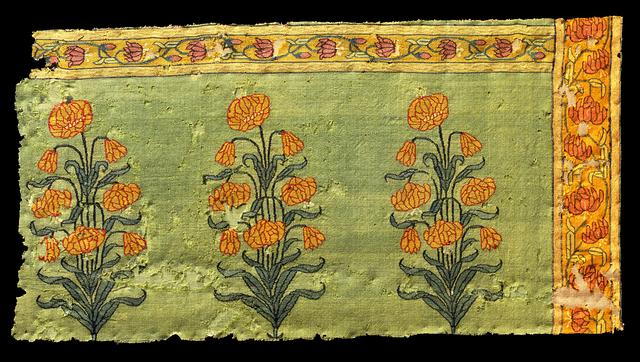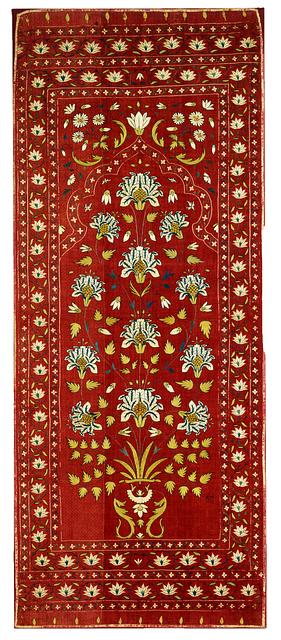Lampas-woven textile, silk
Western India; 15th century
H: 58; W: 48 cm
Inventory number 34/1992
By around 1400, the familiar motif of medallions with confronted animals had virtually gone out of fashion in the Islamic world.
The group to which this textile belongs is the last to feature this motif. The textile was most probably made in one of the Indian sultanates, and both lions with a paw raised and makaras belong to this part of the world. The makara is a composite mythical creature that combines features from a serpent, a crocodile, and an elephant, and is traditionally associated with the Hindu river goddess, Ganga.
The entire textile group is dominated by warm red and yellow tones, a combination that is also found on many garments in the miniature painting of the day.
Because of the climate, very few old textiles have been preserved in India.
The group to which this textile belongs is the last to feature this motif. The textile was most probably made in one of the Indian sultanates, and both lions with a paw raised and makaras belong to this part of the world. The makara is a composite mythical creature that combines features from a serpent, a crocodile, and an elephant, and is traditionally associated with the Hindu river goddess, Ganga.
The entire textile group is dominated by warm red and yellow tones, a combination that is also found on many garments in the miniature painting of the day.
Because of the climate, very few old textiles have been preserved in India.
Published in
Published in
Kjeld von Folsach and Anne-Marie Keblow Bernsted: Woven Treasures: Textiles from the World of Islam, The David Collection, Copenhagen 1993, cat.no. 46;
Kjeld von Folsach: “Textiles and society” in Carpet and textile art, 1994, 1. Hali annual, p. 19, fig. 9;
Kjeld von Folsach, Torben Lundbæk and Peder Mortensen (eds.): Sultan, Shah and Great Mughal: the history and culture of the Islamic world, The National Museum, Copenhagen 1996, cat.no. 302;
Kjeld von Folsach: Art from the World of Islam in The David Collection, Copenhagen 2001, cat.no. 675;
Kjeld von Folsach: “Textiles and society” in Carpet and textile art, 1994, 1. Hali annual, p. 19, fig. 9;
Kjeld von Folsach, Torben Lundbæk and Peder Mortensen (eds.): Sultan, Shah and Great Mughal: the history and culture of the Islamic world, The National Museum, Copenhagen 1996, cat.no. 302;
Kjeld von Folsach: Art from the World of Islam in The David Collection, Copenhagen 2001, cat.no. 675;






